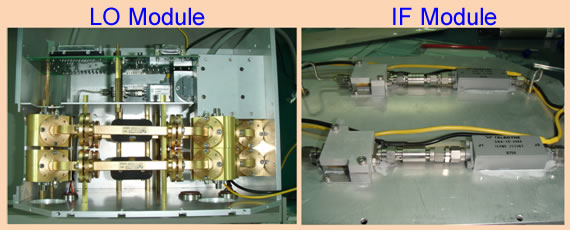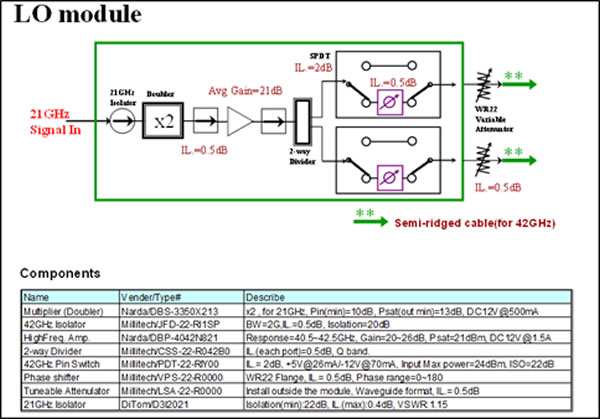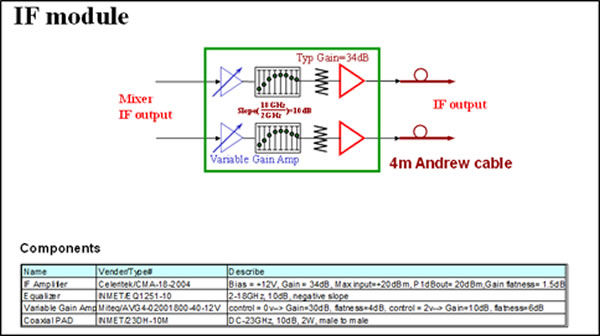|
Home \ Instrumentation \ Receiver
ReceiverThe function of the Array for Microwave Background Anisotropy (AMiBA) receiver is to amplify detected signal from the sky prior to the correlator system. Each receiver needs three modules: RF (radio frequency), LO (local oscillator), IF (Intermediate frequency) and a cooling system working together to constructed the complete receiver function. All RF components are assembled in a vacuum chamber with a cryogenic cold head which can generate very low temperature down to 15K for particularly front-end components: corrugate feed-horn, w-band LNA (low noise amplifier) and w-band isolator. A key component: sub-harmonic mixer was installed inside the vacuum chamber too but not in 15 K environment. The RF signal amplified by LNA will be mixed with the LO source in the Array for Microwave Background Anisotropy (AMiBA) mixer, and then the IF signal is output to post-amplifier in IF module outside of the receiver chamber. In addition, each the Array for Microwave Background Anisotropy (AMiBA) receiver is equipped with an OMT (orthogonal-mode-transducer) to separate the two polarizations in received RF signal into two channels. A sturdy composite material, named G10, is used inside the vacuum chamber to hold and ensure the alignment of the RF chain components while the cryostat cycles between 15K and the room temperature. (Chen MT; Li CT; Hwang YJ; et al., 2009)
IF/LOThe IF/LO module are actually two parts assembled within one box. Regarding to LO module, the main function of this module is to multiply the external 21GHz input signal and output 42GHz signal with sufficient power to pump the Array for Microwave Background Anisotropy (AMiBA) mixer. In each LO path, a pair of PIN switches are used to alternate the LO signal between two delay lines according to the phase switch signal from the control computer. The composition of the IF module contains two high power amplifier and an equalizer. The pre-stage IF amplifier can fine tune its gain by the control voltage through operation system.
|
RF chamber
LO module
IF module |
>> ASIAA






